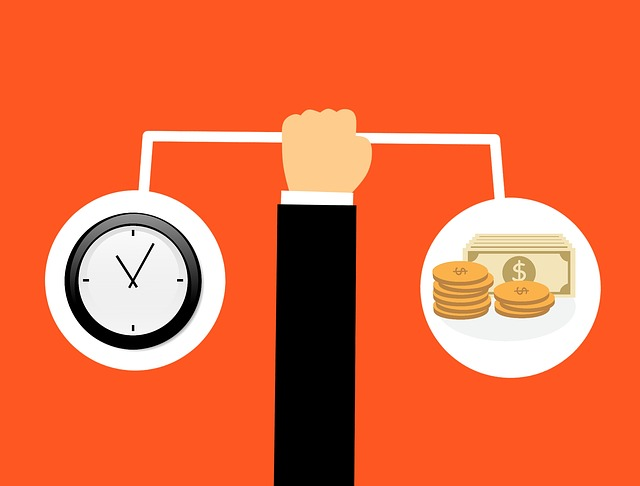What is Invoice Discounting?
Invoice discounting is a form of financing where a company receives a loan based on the value of its accounts receivable. The business repays the loan when it collects payments from its customers.
The discount refers to how the invoice finance provider determines the loan amount. It takes the invoice value, applies a discount, and then advances a loan based on that discounted value.
When the company collects payment, it sends the total amount to the facility. The difference between the discounted and the full amount is the fee paid to the facility and the invoice discounting cost.
Most discount rates range from 1-3% of the invoice’s value. Some discount facilities require the business to discount their entire accounts receivable ledger, while others offer selective invoice discounting.
How does Invoice Discounting work?
A company normally delivers its goods or services to its customers and issues an invoice. The invoice specifies what the company provided, the cost, and the due date.
The business now must wait until the customer pays. For many companies, waiting for payment causes cash flow interruptions.
Invoice discounting allows the business to access the capital in receivables sooner. The process requires working with a company that provides the invoice discounting service.
The business can now use that working capital to cover daily expenses. When it collects payment, it sends the money to the invoice discounting company to repay the loan.
Some discounting facilities require the business to put the money into a customer trust account. This provides more security to the facility.
Invoice Discounting Finance Example
John’s Business is a wholesaler. It delivers goods to a retail store and issues an invoice for $10,000.
John’s works with a discounting company that charges a 2% discounting fee. It also advances invoices at 75%.
John’s Business sends the invoice to the discounting company. The company wires John’s a loan for $7,500. The remaining $2,500 goes into a trust account.
When John’s receives customer payments for the invoice, the $10,000 goes into the trust account. The discounting company now releases the remaining amount minus their 2% fee, which totals $200. So, the discounting company sends the remaining $2,300 to John’s Business.
This simplified example shows the basics of how it works. Depending on the discounting company, there might be additional fees and procedures in real-world scenarios.
Why do small businesses use Invoice Discounting?
Invoice discounting offers several advantages to small businesses.
Early Access to Working Capital
The primary purpose of the service is to access the money tied up in receivables. Unpaid invoices represent an asset, but you can’t cash in on that asset until the customer pays.
Invoice discounting circumvents the waiting period and gives you access to the money now. Businesses use the funds to cover expenses like payroll and rent.
Predictable Cash Flow
Waiting for customers to pay their invoices is unpredictable. They might pay on the due date, early, or (hopefully not) late. Payments coming in at different times makes it difficult to achieve a steady and smooth cash flow.
You know exactly when you get paid and how much you’ll get with invoice discounting. Predicting your cash flow makes budgeting and planning much easier.
How to apply for Invoice Finance:
You can apply for invoice financing through United Capital Source. Follow these instructions to apply.
Step 1: Make Sure Your Customer is Reliable
Invoice financing only works when your customers pay their invoices on time and in full. Ensure you’re certain your customers will pay before contacting a factoring company.
Step 2: Gather Your Documentation
When you apply, the lender needs to review the following documents:
- Driver’s license.
- Voided business check.
- Banks statements from the previous three months.
- Business tax return.
- A/R aging report, A/P report, debt schedule.
Step 3: Apply
You can complete our one-page application or give us a call to apply. Either way, you’ll need to provide the information above and the invoice amount you want to sell.
Step 4: Speak to a Representative
Once you apply, one of our representatives will reach out to discuss the best invoice financing structure for your business. You’ll get an upfront breakdown of all costs, so you don’t have to worry about hidden fees.
Step 5: Receive Approval
The entire process takes about two weeks to finalize. Funds will appear in your bank account 1-2 days after completing the application.
Frequently Asked Questions
Here are the most common questions about invoice discounting.
Invoice Factoring vs. Discounting: What’s the Difference?
Both invoice factoring and discounting are ways to access the capital from unpaid invoices sooner. There are some small but important distinctions between them, though.
Comparing Invoice Factoring & Invoice Discounting
Invoice discounting is a loan, while invoice factoring is the actual sale of receivables. When a company factors invoices, the invoice factoring company assumes credit control and billing and receives payment from the customer.
With invoice discounting, the company retains ownership of its invoices and handles billing and chasing down late payments. It’s sometimes called Confidential Invoice Discounting because the business’ customers never know the company received financing from their invoices.
In invoice factoring, the factoring company might notify customers that they took over credit control of the account. This is more likely when customers are late and the factoring company needs to chase payment.
While many factoring companies require Notification Factoring, some won’t notify the business’ customers. UCS doesn’t use notification factoring.
The differences between factoring and discounting also impact how you record the financial arrangement on the balance sheet, financial statements, and taxes. We advise consulting an accountant before deciding which structure is best for your company.
Is Invoice Discounting the Same as Dynamic Discounting?
While the terms sound similar and have similar goals, they’re different structures. Invoice discounting requires working with a third-party lending company to provide a loan to a business. In dynamic discounting, a larger business agrees to pay off invoices from a smaller supplier in exchange for a discount on the amount owed.
What are the Benefits of Invoice Discounting?
The primary benefit of invoice discounting is better cash flow control. Discounting invoices leads to early access to cash and a more predictable cash flow cycle.
It can also help you grow your business. When you know you can get paid early on invoices, you can offer more credit sales to customers and grow your base.
You can also save money since the rates are typically lower than other forms of asset-based financing. In addition, most invoice discounting is confidential, so you don’t need to worry about alerting your customers that you need funding.
What are the Drawbacks of Invoice Discounting?
Invoice discounting is a loan and adds to your company’s debt. However, as it’s a near-term financing structure, you eliminate that debt when your customers pay their invoices.
Since your business owns the invoices, you’re responsible for tracking down payments. While you must always ensure that customers pay you, it becomes much more critical when you need the money to repay a loan. Some invoice discounting companies require you to discount all invoices, also known as whole turnover invoice discounting.
If a customer defaults on a payment, your business still has to pay the loans. Some discounting companies might offer non-recourse, but the cost would be very high.
Like any loan, there’s also the cost to consider. While discount rates aren’t terrible, you must determine if your company can afford the reduced revenue.
Invoice discounting represents a risk for lenders, raising the qualification requirements. Larger companies tend to use invoice discounting. Small businesses that can’t qualify tend to use invoice factoring instead.
Pros & Cons:
Pros:
- Convert unpaid invoices into working capital.
- Better control over your cash flow cycle.
- Your customers won’t know you received financing.
- Your company maintains control over your A/R.
- Fees are typically lower or competitive with near-term financing.
Cons:
- More difficult to get approved.
- You’re responsible for tracking down payments.
- You’re liable if a customer doesn’t pay.
- Your company incurs debt.
- Invoice discounting fees could be higher than other loans.
Invoice Discounting – Final Thoughts
Invoice discounting is best for established companies that need to turn unpaid invoices into working capital. Younger small businesses might find approval for invoice discounting difficult.
Companies that qualify for invoice discounting typically get excellent rates. If your company doesn’t qualify, you can consider another cash flow finance option, such as invoice factoring.
If you’re ready to pursue a loan, contact us to discuss the best small business financing options for your business.























